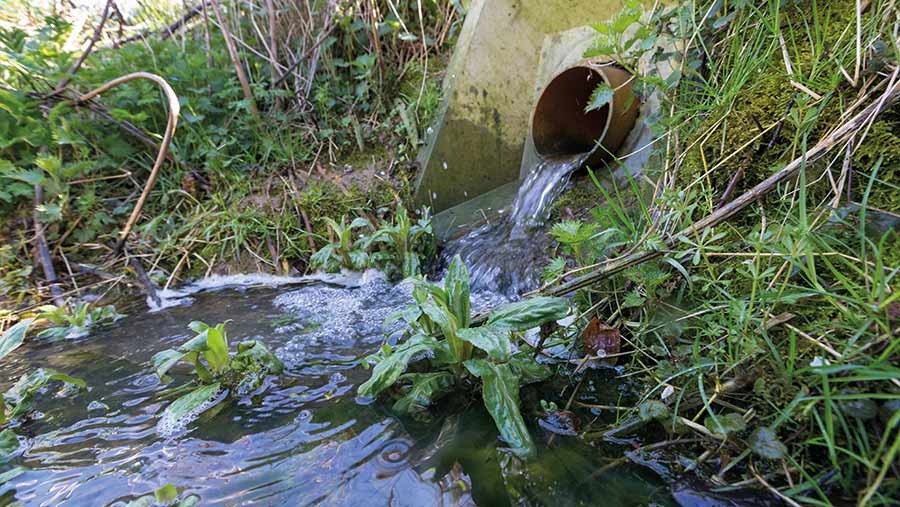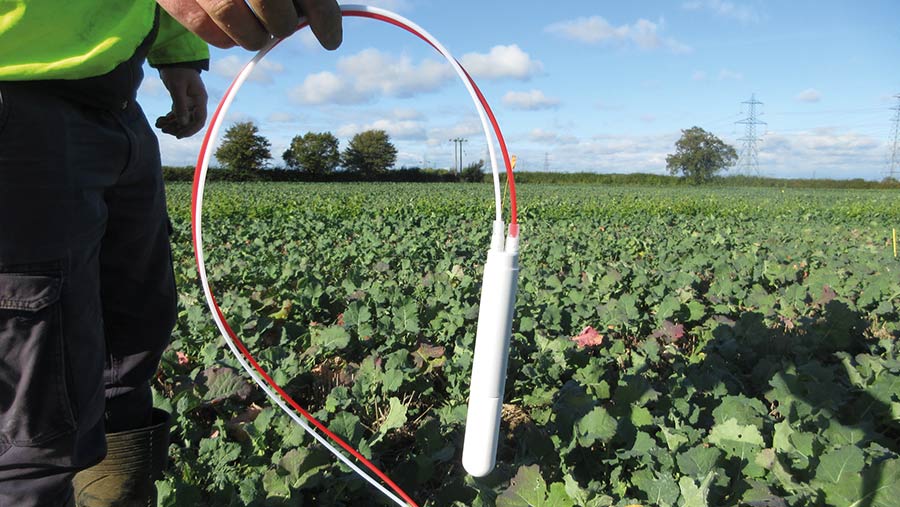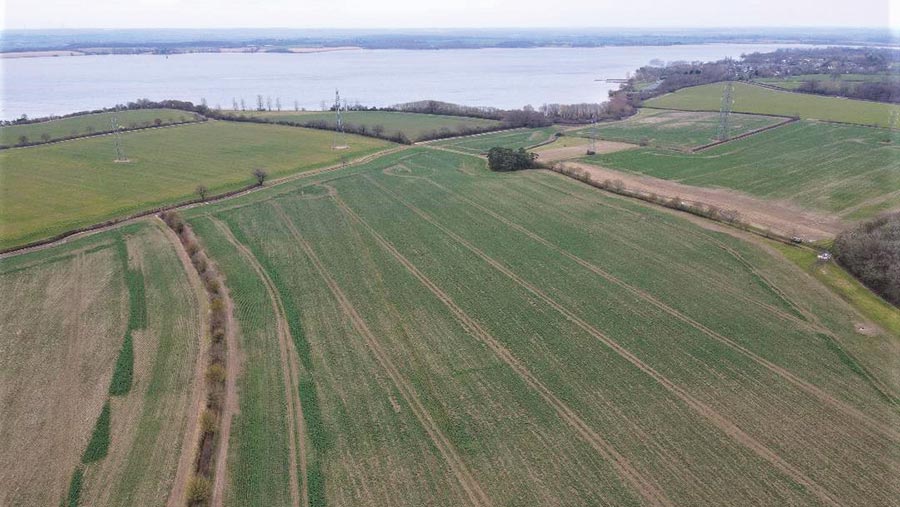Why farmers need to change the way they use propyzamide
 © Gary Naylor
© Gary Naylor Industry heads remain buried in the sand on the issue of propyzamide in water, and one expert says urgent change is needed if it has any chance of regulatory survival.
When a stewardship initiative is launched for a pesticide, or group of pesticides, history shows that long-term prospects for continued availability aren’t too promising.
See also: Optimism for blackgrass control grows with new herbicide Luximo
The Voluntary Initiative (VI) and manufacturers of common oilseed rape herbicides – carbetamide, propyzamide, metazachlor, quinmerac and clopyralid – launched the “OSR Herbicides? Think Water” campaign in 2016.
It aimed to promote practical measures growers can adopt to reduce the risk of these active substances getting into water, both at a national and targeted catchment level.
Since the launch of the stewardship initiative, carbetamide has been withdrawn and the other actives continue to be found in raw water, to varying degrees.
Anglian Water’s Richard Reynolds chairs the Water UK Catchment Network, which collates data from all water companies on pesticide levels in water and presents the information to industry and organisations such as the VI.

Device to monitor pesticide levels in water © Stephen Moss
Increasing levels
He says propyzamide is now the greatest concern for water companies in terms of pesticide pollution from arable land.
Data between 2014 and 2020 suggest that the levels found at abstraction gradually increased, along with frequency of big spikes in high-risk periods when use coincides with heavy rain.
One example of a spike was in the winter of 2020, when levels in Grafham Water – England’s third-largest reservoir – almost led to the facility being shut down because of the potential for drinking water standard exceedances, which can be very costly to water companies.
“When those massive spikes come through, it can overwhelm the treatment works, particularly as you have all sorts of other [active substances] coming through [at the same time],” he explains.
Stephen Moss, independent weed specialist, believes the industry dodged a bullet when Grafham was not shut down in 2020.
In the future, if a big spike did force a closure of a large reservoir due to high levels of propyzamide and there is a drought in the following summer, water shortages could ensue.
This would raise awareness of the issue amongst a wider audience than those in the water and farming industries, and lead to much greater pressure for it to be withdrawn.

© Stephen Moss
Propyzamide rethink
Dr Moss says the existing stewardship measures clearly haven’t worked up to this point and there needs to be a serious rethink about how propyzamide is used, and the amount of active substance applied to soils each autumn and winter.
For the past three years, he has conducted field trials on behalf of Affinity Water and Anglian Water.
The work investigated ways of reducing the amount of propyzamide leaching into water, which in turn will cut treatment costs for water companies, and potentially maintain the herbicide’s availability to farmers.
It has concluded that placing greater emphasis on clethodim for blackgrass control could be an effective way of reducing rates of propyzamide.
At present, oilseed rape and winter field bean growers can use one application of a propyzamide product such as Kerb Flo 500 at a maximum rate of 1.7 litres/ha, which gives a total of 850g active/ha.
Other options include an aminopyralid-propyzamide co-formulation such as Astrokerb, which is approved in oilseed rape only, and provides the same 850g maximum total dose as Kerb Flo 500.
While not good agricultural practice, it is legal to apply an additional 850g dose of a different propyzamide product, giving a total of 1,700g active/ha. There is anecdotal evidence of growers doing this in extreme cases.
Comparable control
Data from the trials show that propyzamide rates can be reduced to 500g active/ha and achieve comparable control to 850g when used after an application of clethodim.
This was confirmed across six different oilseed rape field trials, with blackgrass populations ranging from 21-170 plants/sq m (see chart below).
The project also tested what effect this had on propyzamide leaching, and a replicated tramline trial was set up near Grafham Water, where the levels in soil water were recorded after a December application.
The results were clear. A December treatment of 500g/ha resulted in a 91% reduction of active substance in the soil water when compared with the 850g provided by a full label rate.
Clethodim is an ACCase inhibitor (HRAG Group 1 (A)) and many actives within the same group are ineffective against blackgrass due to target-site resistance in UK populations, with the ACCase I1781L mutation the most common.
However, previous work at Rothamsted Research shows that clethodim – contained in products such as Centurion Max – still achieves good levels of control when applied to blackgrass populations carrying the I1781L mutation.
Water conditioner
There has been concerns raised about the effect of water quality on “dim” herbicide efficacy, with hard water – particularly that with high levels of bicarbonates – reducing the active’s ability to be absorbed into the leaf.
Dr Moss used water of low, medium, and high hardness for spraying in trials and found no effect on clethodim efficacy.
However, in trials with clethodim and De Sangosse’s water conditioner X-Change he found an average 11% increase in efficacy regardless of water hardness.
So, will this change commercial advice? He believes there should be more thought about how propyzamide is used in oilseed rape and winter field beans.
Growers can test their blackgrass populations for clethodim resistance.
Where the population is sensitive, the ACCase inhibitor – combined with a water conditioner, where appropriate – can be used as a tool to reduce the propyzamide-use rate to 500g active/ha.
This programme would be particularly favourable in areas with lower blackgrass infestations and on fields with a high risk of leaching.
It might not be sensible in all situations, particularly where populations are severe, but it could help reduce the risk of movement into water.
Dr Moss points out that the water companies want to work with farmers on solutions and are not pushing for a ban.
It is up to the crop industry to change course and help save propyzamide’s future.
He adds that it might only take one bad year when water cannot be delivered from a major reservoir to trigger its withdrawal from the market.
“That will cause all sorts of issues, and I don’t think that’s scaremongering, although it’s only my opinion,” he says.
Stewardship advice
Manufacturer Corteva continues to work on promoting propyzamide stewardship, but technical advice on getting the most out of the product has not changed.
Its own data suggests that acceptable levels of control are more frequently achieved with rates of 700-840g active/ha, rather than 500g, although this should be decided on a case-by-case basis.
Timing is also key, according to the firm’s Joe Martin. Soils need to be moist and at 80% field capacity, and soil temperature at 30cm deep must be a maximum of 10C and declining for maximum efficacy.
Corteva’s work in 2021-22 showed the optimum application date was about the last week in November. This won’t be the same every year, but the company’s Kerb Weather Data App can help growers optimise their timing in any given season.
The same data set also tested a double application of 750g active/ha at the end of October and again in November and found no uplift in blackgrass control compared with single, well-timed 750g/ha and 840g/ha sprays.
This evidence was backed up by a separate Niab trial, with a 1,500g/ha total dose offering no agronomic benefit.
Mr Martin says this puts too much propyzamide on to soils and increases the risk of run-off into water.
The information in this article was presented at the Annual BCPC Weeds Review, held earlier this month at the Sophi Taylor Building, Niab, Cambridge.

